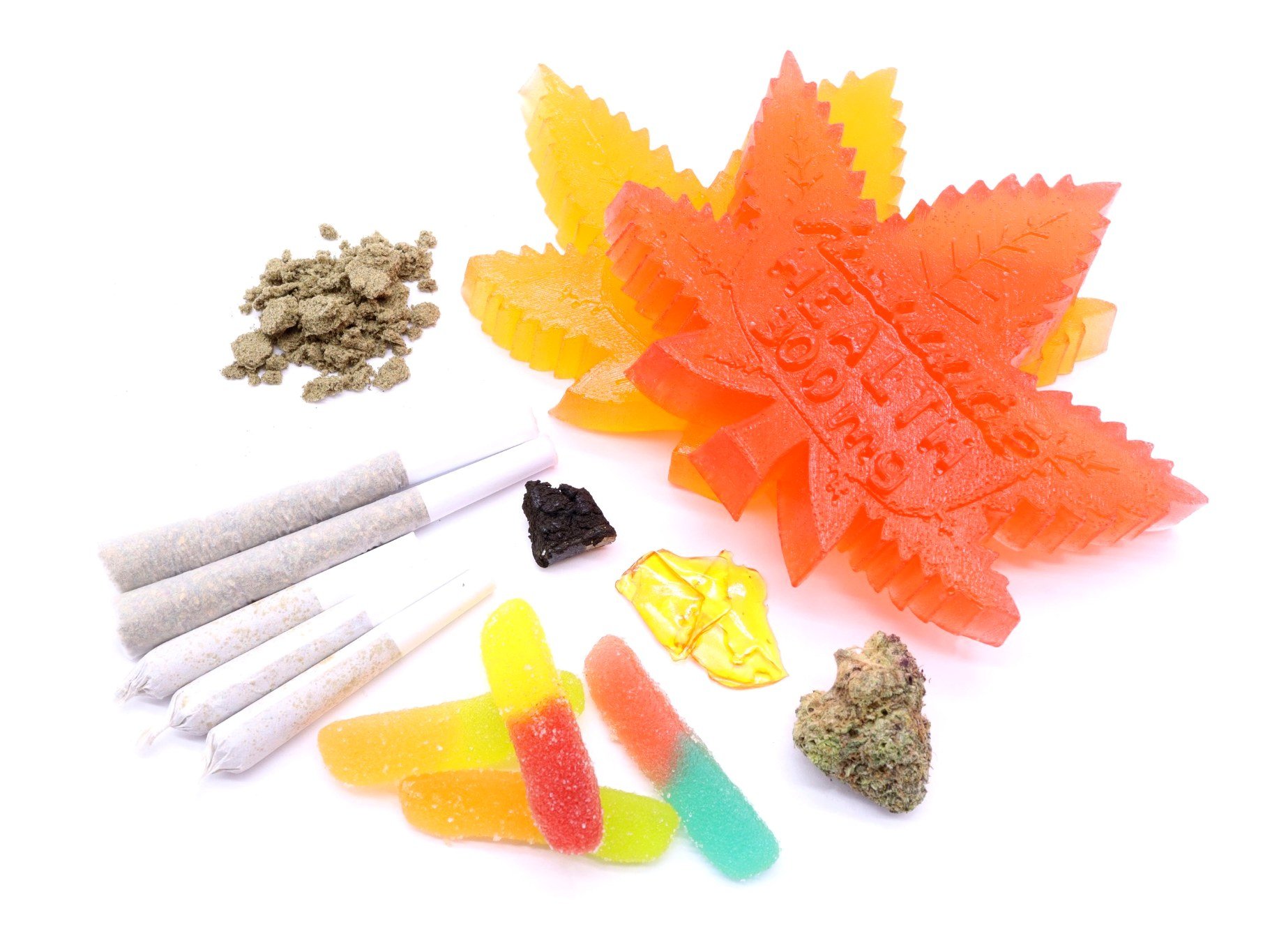Cannabis anatomy isn’t too complicated for most growers to understand – you’ve got your roots, stems, leaves and buds. These four cover the major areas of plant anatomy, but what about the finer points of each plant? Do you pay attention to bud density? What coloration are your plant’s leaves? How about internodal spacing?
It takes a magnifying glass and some biochemistry knowledge sometimes to keep up with what your plants are communicating about their health – or lack thereof. In this series on plant cultivation, anatomy and plant sciences we’ll hone in on specific details about cannabis biology and chemistry.
This article will focus on cannabis nodes. What are weed plant nodes? How many nodes on a weed plant is considered average? Why are nodes important? Let’s connect the dots like internodes connect main stems to auxiliary branches in this guide to cannabis nodes.
What Are Weed Nodes?
Have you ever looked at a major highway junction from above? Maybe you’ve seen it from a helicopter or on traffic cams. Highway systems are similar to cannabis plants with their stems, nodes, and branches. Imagine overlaying a cannabis plant on a highway in a city. The main road is like the main stem. The exit ramps and merge lanes are like nodes and branches. Cars represent nutrients, water, and oxygen moving through this network. Side by side, you can see why growers call plant stems “highways for nutrients.” The end goal for these “drivers”? The buds!
Weed plant nodes are where new growth emerges from the main stem. Nodes are simple junctions where nutrients, water, and oxygen move from the main stem to other branches. Does having more nodes mean a plant needs more nutrients for growth? Yes and no. We’ll explain more on this later.
Nodes indicate many plant traits like sex, genetics, growth, and health. Next, we’ll discuss why cannabis nodes matter. But first, let’s explore the differences between cannabis nodes and internodes.
Internodes & Internodal Spacing
If a node is where one branch emerges from the stem, what are ‘internodes’? You might have heard of internodal spacing, which refers to this concept. Internodes are the spaces between nodes. So, if nodes are where stems and branches meet, internodes are simply the gaps between these points. Internodal spacing can reveal various aspects of your cannabis plants, like genetics, deficiencies, or environmental stability.
Most growers count the nodes of their plants to confirm their genetics, even though many strains are now heavily hybridized. Traditionally, internodal spacing helped determine if a plant was indica or sativa-dominant. Indica plants tend to be shorter and bushier with closely spaced nodes that form dense arrays of fan leaves. These leaves resemble the iconic maple leaf of Canada. In contrast, sativas have more space between nodes, with finger-like leaves that allow for better airflow. Their leaves resemble tropical, palm-tree patterns.
It’s important to remember that not all cannabis plants can be defined as purely “X % sativa, Y % indica” due to widespread hybridization over the last three decades. However, counting nodes, observing their spacing—whether short and tight or tall and stretched—and understanding the dominant traits in certain cannabis genetics can help you identify what those seeds you planted have become.
Why Are Nodes Important?
PLANT SEX
Plant sex is not about cross-pollination. It’s about identifying and keeping female plants while discarding the males. Female cannabis plants haveils, which are hair-like and usually white. These pistils grow at the nodes and develop into bud sites.
Male plants show ball-like growths at the nodes. These look like bunches of grapes. They are easy to see and mean trouble for growers due to pollination risks. Remove male plants immediately to prevent pollination. Clean the area thoroughly to avoid risks to your crop.
But wait, there’s more! Some plants may have both male and female parts. These are called hermaphroditic cannabis. This can result from stress, nutrient issues, or genetics. Such plants can self-pollinate, risking crop loss. Remove them to protect your other plants.
LIFECYCLE
Cannabis nodes can indicate what stage of development that your plants are in. Early-stages of pistils signify that the flowering stages aren’t far behind, while fully-developed and flourishing pistils will help growers to know when to kick into flowering with light schedule changes.
ENVIRONMENT
If environmental conditions aren’t ideal, then weed plant nodes can start to stretch out and cause abnormal internodal spacing. Environmental stressors like poor lighting, temperature fluctuations or sharp changes in humidity levels can lead to a condition called etiolation – whereby plants over stretch themselves in attempts to reach light sources or to respond to imbalanced temperature/humidity/airflow conditions. When cannabis nodes etiolate it puts strain on the nodes as well as the rest of the plant.
Some growers can control etiolation in their plants and actually incorporate this into their growing routines leading to flowering – by shifting light sources gradually away, they force their plants to grow tall and strong. This is an advanced kind of plant training/manipulation, so it’s best avoided unless you’re a true greenthumb.
CLONES
Nodes on a weed plant that are lower on the canopy – aka the most mature branches on the plant – often make for the best clones or cuttings. The more established a node/branch system, the more likely you’ll be to successfully transplant it. When searching for which cannabis nodes to cut your clone from, try to pick the strongest/healthiest connection – keep in mind you’re damaging the plant, so you need to choose a node on your weed that can recover from the cut, and a branch that is healthy enough to establish itself its own root system.
Be In The Nodes With Your Weed Plant’s Nodes
There are a number of reasons why some growers count their weed plant’s nodes, while many others don’t pay much attention to internodal spacing beyond the identity of the plant’s sex. Cannabis nodes are an often overlooked part of the overall plant’s anatomy, and with this guide to cannabis nodes we hope you found some new insights into their importance to growing a successful crop of buds.
Stay tuned for more growing tips, tricks, strategies, new technologies and everything you need to know for growing some dank dro. Thanks, as always, from the entire Haute Health crew for your readership, and may the weed be with you!
FAQ’s
What are nodes in cannabis?
Nodes are the connective parts of cannabis plants where new growth stems offshoot from already established stems. Sometimes referred to as “Y nodes” or “off-shoots” in other cultivation circles, nodes typically start as early-stage leaf-nodes, stretching into elongated stems and establishing into full fan-leaves and buds.
How many nodes should a cannabis cutting have?
Cannabis cuttings, or clones, typically have at least two nodes on them – you might not want to take a cutting of a single node because this clone might be at risk of not being established enough to survive the transplant shock. The weed plant node count doesn’t have a limit for cuttings, therefore the more nodes on a weed plant the better – 6+ is awesome!
Why is it called a node?
Cannabis nodes are referred to as nodes because they are the connection points whereby old growth and new plant growth intersects. Weed plant nodes can differ in number & spacing, but every cannabis plant will develop nodes as it reaches maturity, towards light sources.


